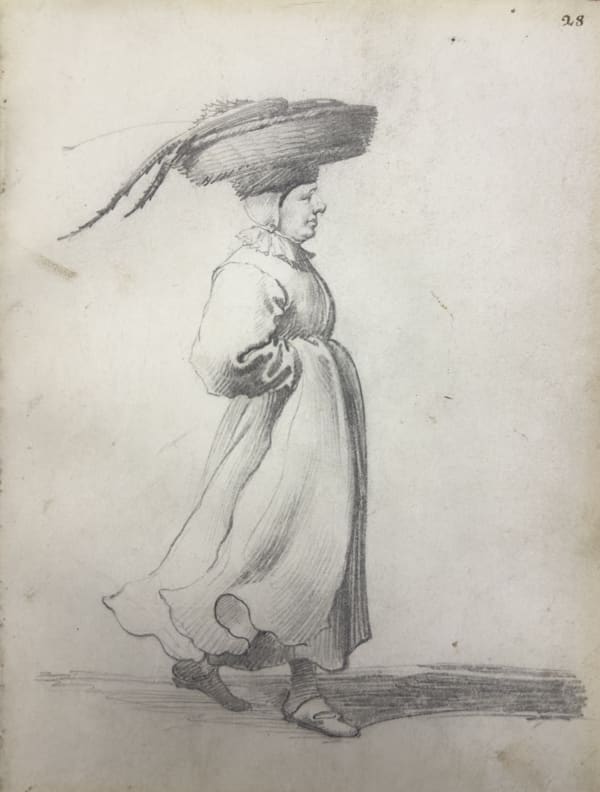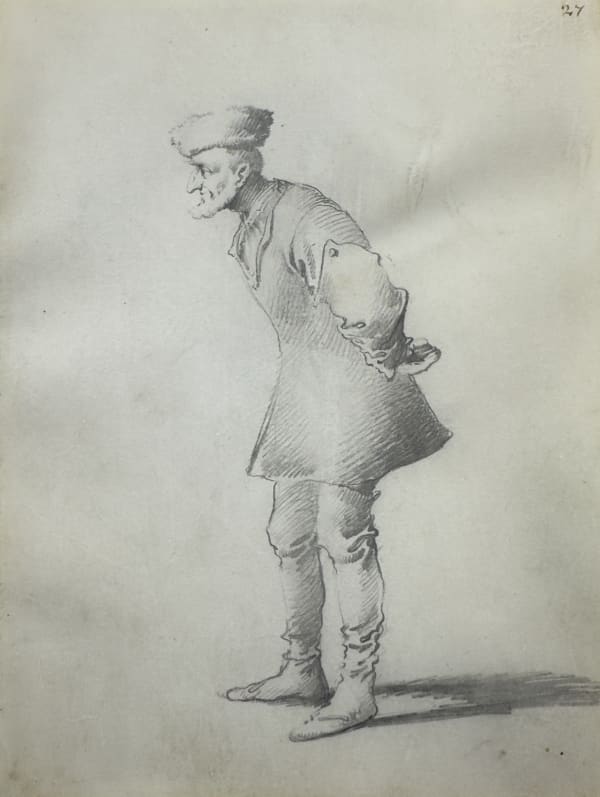Pieter Quast (Amsterdam 1606 - 1647)
Pieter Jansz. Quast was born in Amsterdam ca. 1605. It is unknown who taught him, although his work was clearly influenced by the Flemish genre-scene painter Adriaen Brouwer and the French draughtsman and engraver Jacques Callot. In 1632 Quast married Anniette Splinters. Between 1634 and 1641 the couple lived in The Hague, where Quast became a member of the local guild of St Luke. In 1641 they went back to Amsterdam, where they remained until Quast’s death in 1647. He is known to have taught at least two pupils, Dirck Cornelisz. de Hooch (by who virtually no works are known) and the genre-painter Jan Jansz. Buesem.
Pieter Quast painted mostly small-scale genre scenes, with the subjects ranging from groups of peasants to elegant companies. The satirical and caricatural quality of his work is reminiscent of the work of his contemporary, Adriaen van de Venne, although Quast adopted a looser drawing style. Besides paintings, he also made highly finished picture drawings, often on vellum. Although some of his work was engraved, it is unclear whether he did this himself. An example of this is the “Series with two jesters” (Hollstein 57 – 68), which shows the influence of Callot and his Commedia dell’ Arte figures on Quast’s work.
The present work, a charming genre scene, shows a fiddler entertaining an audience of merry peasants, presumable in or outside a country tavern. The composition is tightly packed with a cast of different characters, which Quast has depicted with a keen eye for detail and a sense of psychological depth.
Provenance
Private collection, Germany.
- X
- Tumblr
-
 Pieter Jansz. Quast (Amsterdam ca. 1605 - 1647)A Dancing Jesterblack chalk on vellum195 x 153 mmnumbered '21', upper right
Pieter Jansz. Quast (Amsterdam ca. 1605 - 1647)A Dancing Jesterblack chalk on vellum195 x 153 mmnumbered '21', upper right -
 Pieter Jansz. Quast (Amsterdam ca. 1605 - 1647)A Woman carrying a Basket on her Headblack chalk on vellum190 x 140 mm
Pieter Jansz. Quast (Amsterdam ca. 1605 - 1647)A Woman carrying a Basket on her Headblack chalk on vellum190 x 140 mm -
 Pieter Jansz. Quast (Amsterdam ca. 1605 - 1647)A Man wearing a Fur Hatblack chalk on vellum190 x 140 mm
Pieter Jansz. Quast (Amsterdam ca. 1605 - 1647)A Man wearing a Fur Hatblack chalk on vellum190 x 140 mm -
 Pieter Quast (Amsterdam 1606 – 1647)The Card Playersblack lead on parchment222 x 302 mmsigned and dated ‘Pieter Quast / 1638’, upper right; numbered ‘11’, lower right
Pieter Quast (Amsterdam 1606 – 1647)The Card Playersblack lead on parchment222 x 302 mmsigned and dated ‘Pieter Quast / 1638’, upper right; numbered ‘11’, lower right -
 Pieter Quast (Amsterdam 1606 - 1647)A young Mother showing her Child The Portrait of its Fathergraphite on vellum227 x 170 mmsigned and dated 'Pieter Quast f. 1640', lower right
Pieter Quast (Amsterdam 1606 - 1647)A young Mother showing her Child The Portrait of its Fathergraphite on vellum227 x 170 mmsigned and dated 'Pieter Quast f. 1640', lower right





